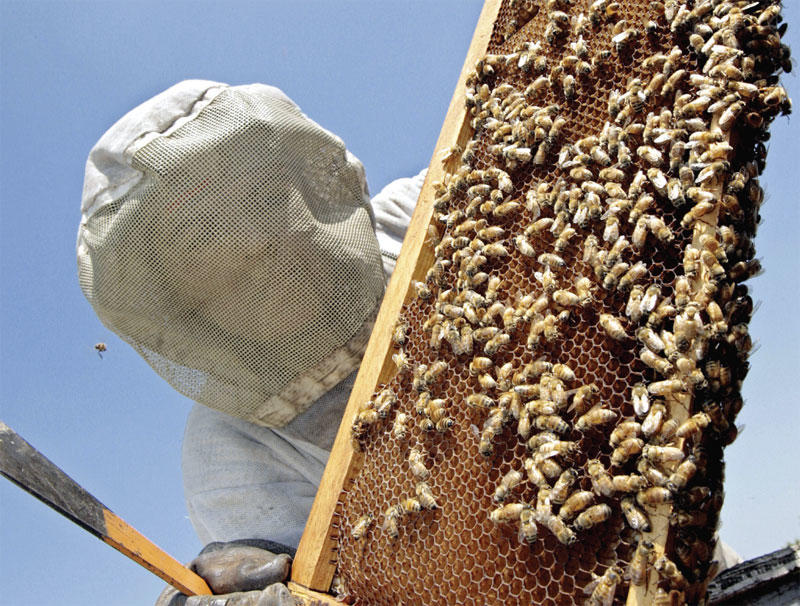Scientists investigating a dramatic drop in the nation's honeybee population over the past year have suspected as the cause everything from pesticides to extreme weather to cell phones interfering with bees' navigation systems. But Columbia researchers say they've identified the real culprit: a bee pathogen first discovered in Israel three years ago.
Apiarists across the U.S. first noticed that large numbers of bees were missing last November. Curiously, beekeepers weren't finding dead bees in or near their hives; rather, worker bees were flying off in search of nectar and simply vanishing. More than honey was at stake: Many commercial farmers rely on kept bees to pollinate fruit, vegetable, and nut crops because there aren't enough wild honeybees to do the job. So they ship in hives on flatbed trucks to pollinate crops in bloom.
A team of scientists led by Penn State entomologist Diana Cox-Foster last winter enlisted Ian Lipkin, director of Columbia's Jerome L. & Dawn Greene Infectious Disease Laboratory, to help investigate what they are calling Colony Collapse Disorder (CCD). Lipkin, an epidemiology professor who discovered the West Nile virus in 1999, doesn't usually work with insects. But Cox-Foster persuaded him that the highly sophisticated genetic techniques he uses to isolate human pathogens could help solve the CCD riddle. With technology pioneered in his own laboratory for isolating microbes, as well as commercial DNA sequencing tools, Lipkin and his team screened for viruses, bacteria, parasites, and fungi in samples taken from vacated hives as well as from healthy ones.
The researchers found a bug called Israeli acute paralysis virus (IAPV) in all of the CCD hives tested except one. While that doesn't prove the virus is the cause of CCD, Lipkin says it establishes a strong link. "At minimum, IAPV is a significant marker for bees and hives at risk for CCD," he says.
Most experts, including Lipkin, believe that multiple causes are behind the phenomenon; autopsies of the few dead bees recovered from CCD hives have turned up numerous viruses, bacteria, fungi, and parasites. But IAPV appears to be the common denominator. It could be that IAPV wipes out colonies that are already immunosuppressed, Lipkin suggests.
To test his theory, researchers at Penn State and the U.S. Department of Agriculture now are introducing IAPV into healthy hives as well as hives with other problems to see under what conditions the colonies will fail. LipkinÕs lab is providing the IAPV samples for these follow-up studies and will participate in the data analyses.
The bees' disappearing act continues, meanwhile. A quarter of the nation's apiaries have already lost between 50 and 90 percent of their bees - totaling tens of billions of missing insects - and entomologists are reporting possible CCD cases in Europe, South America, and Asia, as well as Israel. Some experts worry this could become a global catastrophe, while others are more sanguine, noting that honeybees have gone missing before. In the last century, bee populations periodically experienced similar declines. Scientists are still trying to figure out whether CCD may be a repeat of these earlier die-offs, or if it represents a new and unprecedented threat to honeybees.
The good news is that if IAPV is definitively implicated as a cause of CCD, researchers think science and nature together may be able to outmaneuver it. Israeli researchers have found that some honeybees that have survived CCD have incorporated short segments of the virus's DNA into their own DNA. "This integration confers resistance to the disease," says Lipkin, whose findings appeared in the September issue of the journal Science. "Colonies of naturally emerging transgenic bees could be expanded and used to repopulate hives decimated by CCD."



